In this post we hope to enlighten you with a few techniques for improving your website's content. This applies to several potential touch points of a customer's journey so can be applicable for both service led on page copy as well as content more focused towards building your brand.

Pinterest for seeing in what context your products are being used
Pinterest is such an underestimated way of generating content ideas. Here are some ways you can get an idea of what your audience are associating with your products:
If you add /source/brand.co.uk to pinterest.co.uk you can see the images that are being pinned from your own/competitors website. Example:
https://www.pinterest.co.uk/source/currys.co.uk
Then click into the boards that your products are featured on e.g Hanna Backman Kitchen.

These will often include a mixture of both products and articles so will need some mining.
So, use a tool like web scraper and right click on the bold title e.g 'CIA640 C Electric Induction Hob - Black'
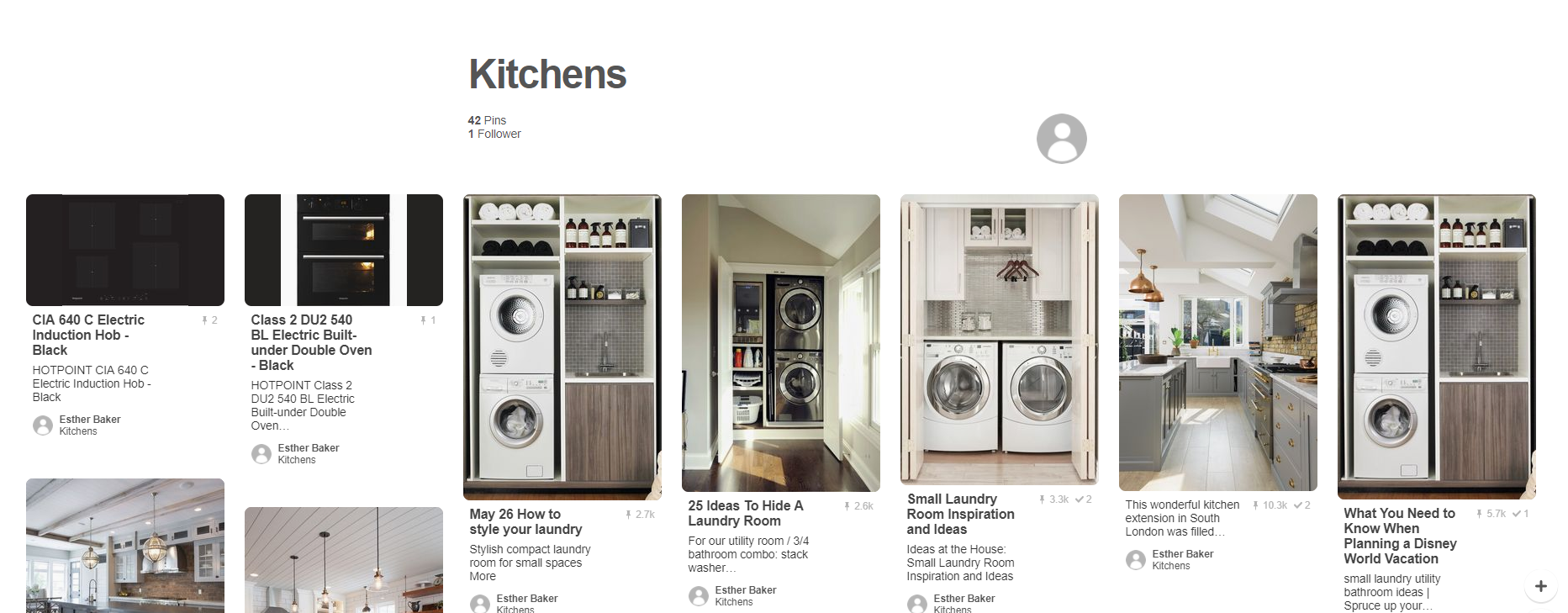
This will return something like the following:
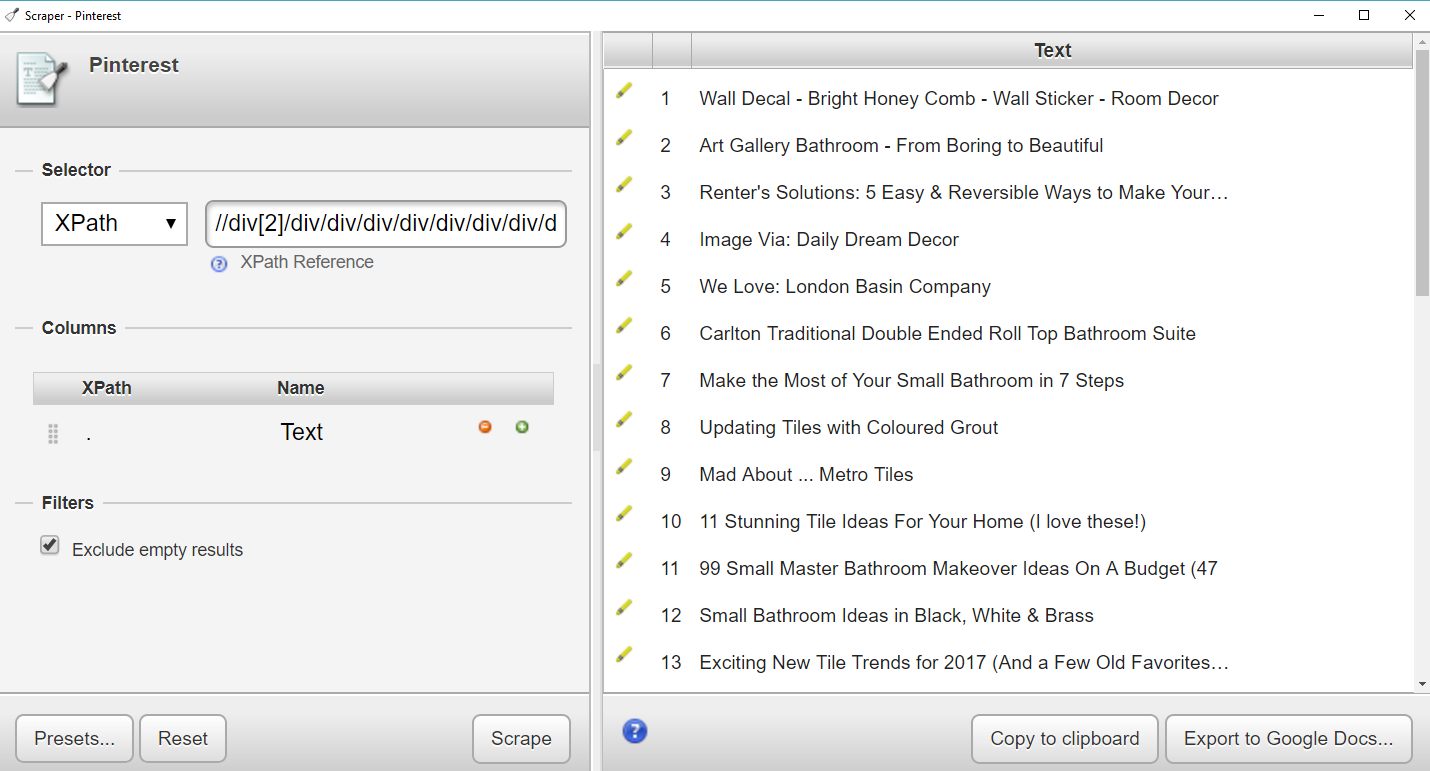
This may take some sifting through as not all products feature within content but you can collate 100s of ideas in a matter of minutes. The advantage of this is being able to see how your products are being featured within content and also related ideas.
Method 2
One other option with Pinterest is to search google using a search such as the following:
site:www.pinterest.co.uk/*/gadgets/ see this in action
Pinterest’s URL structure is consistently like this www.pinterest.co.uk/username/boardname
So, if we wildcard the user name as above we can see a whole host of boards with a topic which you have chosen. Pinterest is a little limited as obviously not all sectors lend themselves well to image based searching but all the same can be really useful for products that do.
Buzzsumo for identifying patterns in content
Mentioned in a few blog posts of ours previously this tool is awesome for seeing how successful pieces are across different social channels and you can see where ‘topics’ are successful. Then you can break articles down into identifying what they feature, here are some examples:
- URL
- Title
- Word count
- Subheadings
- Images
- Video
- Audio
- Statistics
- Number of outbound links
- Bullet points
- Original data
- Interactivity
From here you can start identifying patterns of success. And understanding why these pieces have been successful and apply them to your content strategy.
SEOMonitor for looking at what content is being served through search engines
SEOMonitor allows you to see what features are being triggered within a SERP. Here is an example:

In order, these images signify
Paid ads running
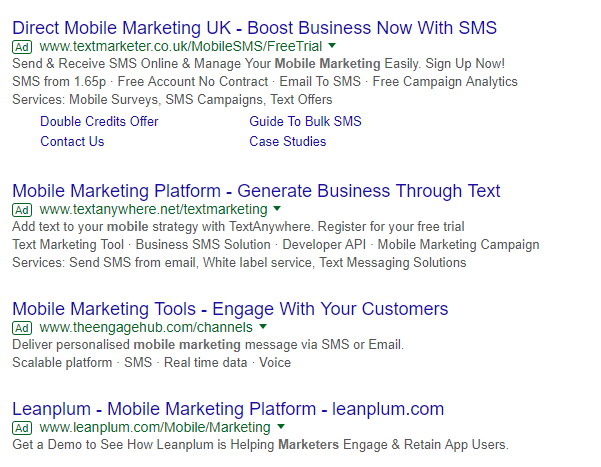
Images

Remember to optimises your images in this case with alt text if this is the case.
Top stories

This is one perhaps to relay to your PR team. And get featured on 3rd party websites. But also analyse the topics and discussion points that are getting written and talked about.
Answer Box
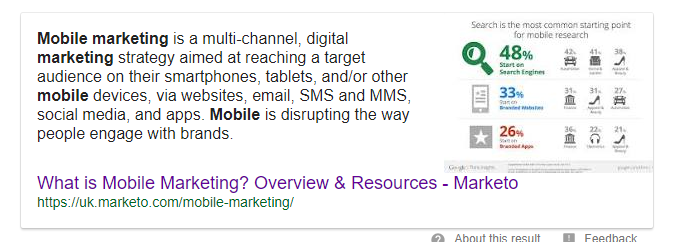
The answer box or ‘ranking 0’ Marketo have actively employed a strategy for this. As they appear quite regularly for their resource pages:
https://uk.marketo.com/mobile-marketing/
With this in mind ask yourself are you creating and optimising any of your content with this goal in mind? There are plenty of Google ranking factors that influence this but from our own experience the most important is getting your on page optimisation right. Here is an example where a website has outranked the government for the term 'how to fill in a tax form':
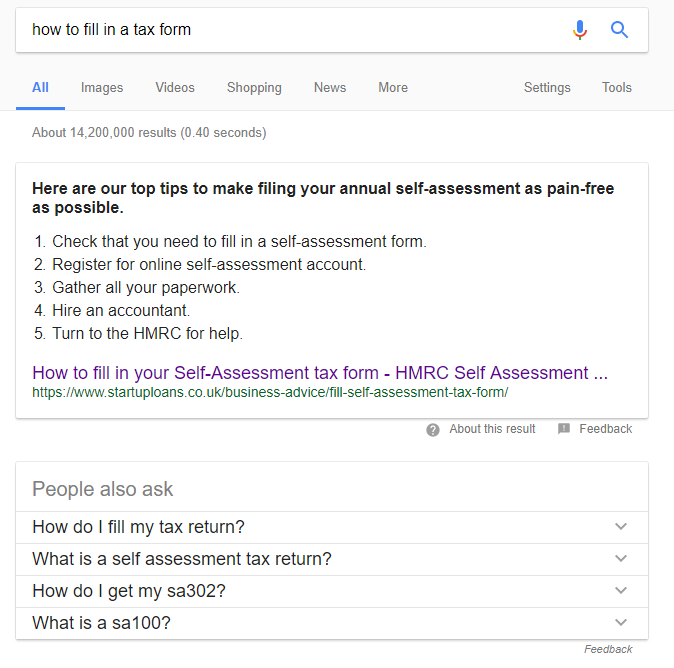
See in live here
https://www.startuploans.co.uk/business-advice/fill-self-assessment-tax-form/
Vs
https://www.gov.uk/self-assessment-forms-and-helpsheets
Why? The titles on the page give step by step advice whereas the government result underneath gives warning about the penalties for being late, points towards a few resources of where you might be able to get help. But in no way or form does it help fulfil the query or take you through a helpful step by step process and highlighted these steps through header tags. (Although it could be argued that startuploans header tags could be structured better)
PPC for FAQs and topics
As digital marketers, we can sometimes be so focused on conversion and ad spend, that we overlook the long term benefits and information not directly related to conversion we can gain from different channels. We’re not in any way saying it is wrong to measure yourself on direct ROI - if we pay for something we expect something in return. But if you have budget and you’re willing to invest in feeding your content strategy you should do so. There are so many searches that ask questions that this could be so valuable in informing your website’s content.
In the below video Converse famously targeted teenagers with serving ads to micro sites to serve queries such as “How to talk to a girl
As a branding campaign, they identified a way to touch their target audience with ads.
Further to this example if you were selling houses at auction you might get searches like the following (if you haven’t inserted negative keywords around informational terms)
“How buying a house at auction works”
“What do I need to arrange if I buy a house at auction”
“What percentage are auction fees to sell property”
Whether these warrant whole blog posts is a call you have to make but don’t rule out answering these queries on service pages for conversion purposes as they may be anxieties your audience hold.
Answer the public for hijacking search journeys
This is quite a commonly known tool. You can visualise and extract the terms google suggests around questions and prepositions around your products or search terms. The focus here should still be around if and how this content would be useful to cover for getting customers into your acquisition funnel.
One brand we feel that has done this well is Zapier. One section of their website documents reviews on the apps they allow integration for https://zapier.com/zapbook/reviews/. Most of the apps they deal with have users search for reviews and more information according to Answerthepublic. This raises awareness of Zapier when people are looking at products that they can use Zapier to integrate with other apps and services they may use.
Running site searches on Quora/forums
Search engines are not the only place users ask questions on the web so running a search such as site:quora.com “insert topic” gives you the opportunity to understand further queries. You can also apply this technique to niche forums.
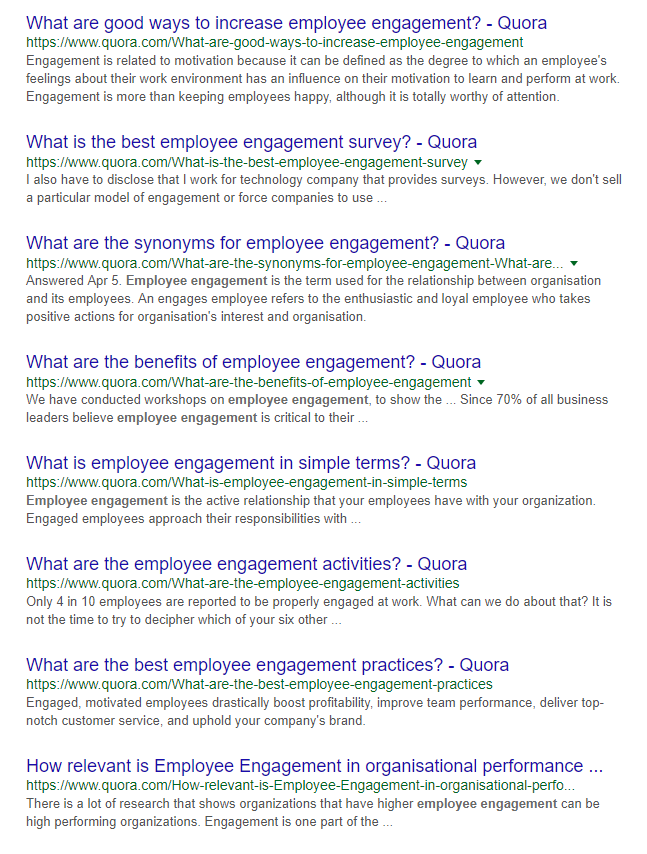
This user generated content is an absolute gold mine. You can also use Webscraper here to collate this information.
See live version here
Internal site search to identify what users are searching for on your website
It amazes us that how many brands don’t even have site search enabled through analytics. This is one of the most transparent data sets you can obtain from your customers in terms of what they are hoping your website provides. This can be activated through analytics. Here are the instructions to set this up https://support.google.com/analytics/answer/1012264?hl=en
Interviews and surveys to identify customers' language
A great way for identifying needs and informing your content is actually talking to your customers on why they chose you.
Outcomes
Focus on the outcome of using your product or service and what it solved for them/how it made them feel. Use this transcript to help make your future customer think “yeah that’s what I need”. This can lace your copy around CTAs on your website. Or if you feel it warrants a longer, more in-depth piece you have that opportunity to do so.
Previous experience
What was there process in coming towards a decision that you were the correct solution? By reverse engineering this and seeing who else they may have tried. Why didn’t they like them? What were the problems? Solve these anxieties and state this on your website.
Identifying blockers
Ask them if there was anything that nearly made them not buy. How your onboarding or sales process could be improved, any confusion on how to purchase or contact. Make sure your website reflects this.
Speak to your sales team
What do your customers frequently ask? Is there clear responses to these questions on your website. If users tend not to visit your FAQ page think about how you can answer these naturally.
We hope that you take some inspiration from his post to help inform your content strategy and any questions are welcome.
